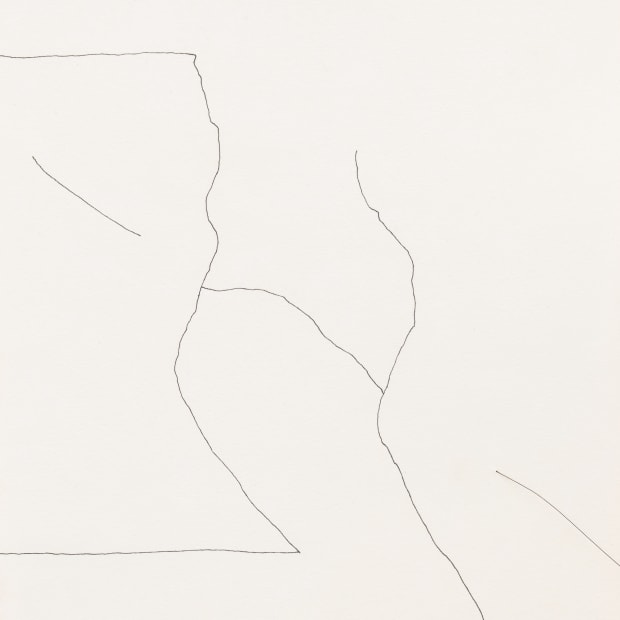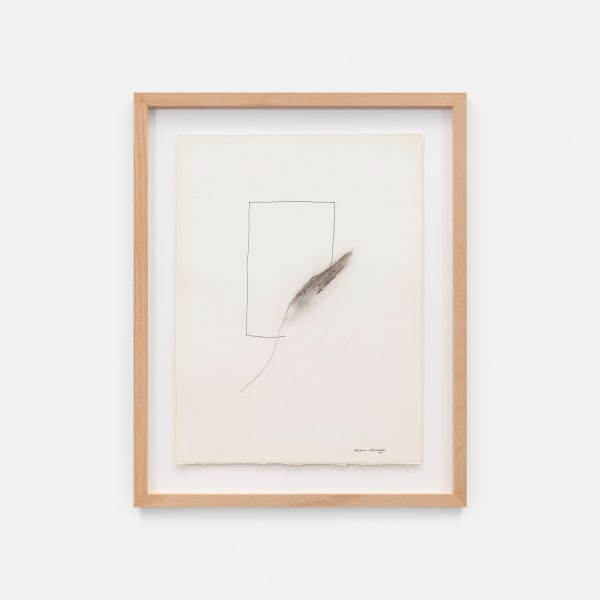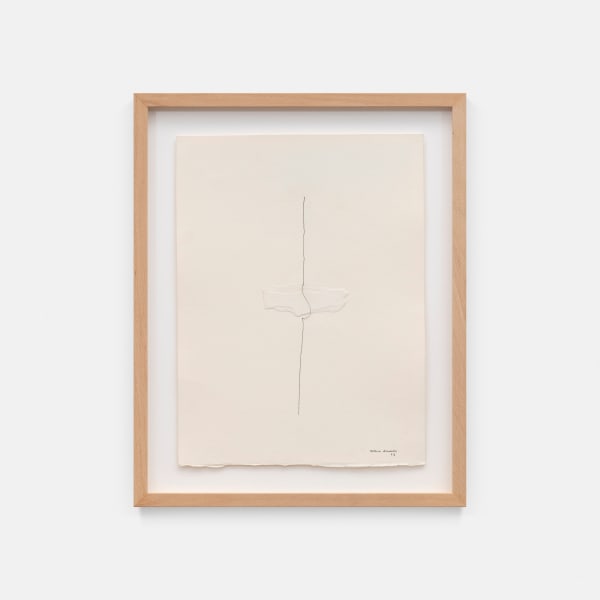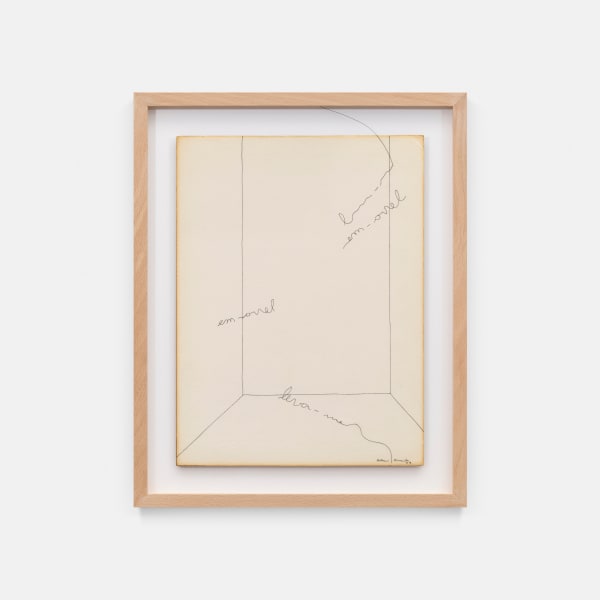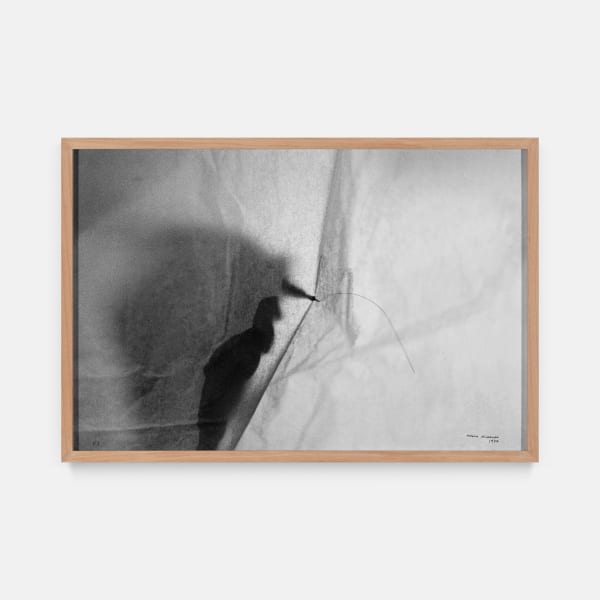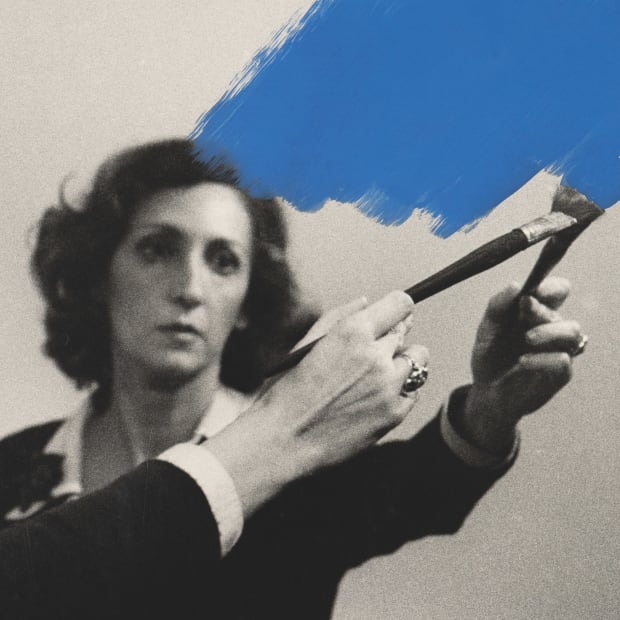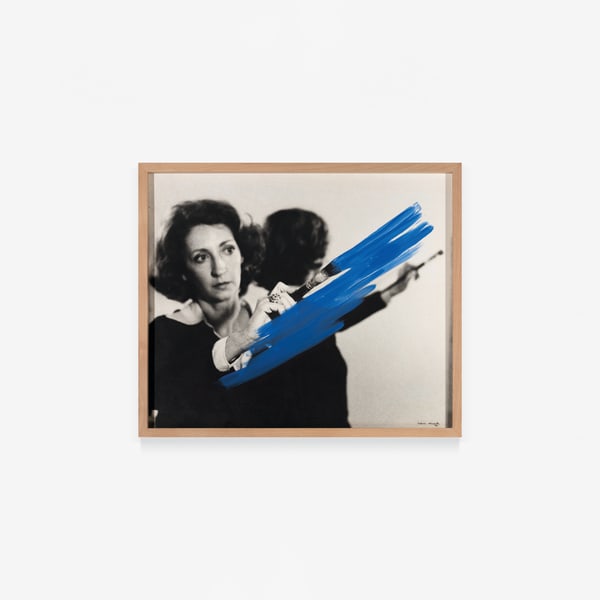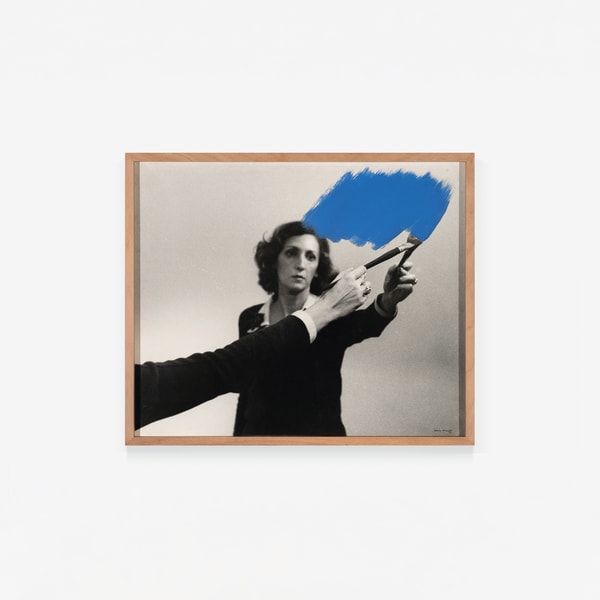In Inhabited Canvas Helena Almeida uncovers the work’s author. This question [...] does not relate to self-portraiture as much as the issue of authorship. Almeida is able to simultaneously be herself, an other and neither. “I am not myself, I am not the other, I am something in between” wrote the poet Mário de Sá-Carneiro. Almeida uses herself as an object, an empty, malleable vessel (in the same way she uses the horsehair, the blue ink, the black pigment or the stool from her studio in later images), which is manipulated in ways that enable the artist to pursue her formal and conceptual interrogation of the image.
Helena Almeida refuses the concept of self-portrait as a transparent reproduction of an individual personality. There isn’t an autobiographical aspect in her work; she is not herself. The spectator who attempts to unravel the subject author in her portrait is left wanting. Her images usurp a tautological desire for meaning that the immediate and pseudo-transparent nature of photography seems to allow. She takes on a mask - without ever using disguises or makeup - in order to be photographable. As the main character in her works, Almeida introduces in them a paradoxical element: while she makes the author visible (and never stops being the author), the artist continuously postpones the possibility of knowing her identity. Looking at forty years of work, in which it is possible to see, for example, the artist aging, does not afford any more intimacy, or insight into the artist’s personality, than in the first image she appears in. (...)
The stroll she takes wearing her canvas-suit in Inhabited Canvas, is not more than an enactment for the camera. As with all other works, it is meticulously prepared through numerous drawings, which constitute a sort of cartography of the work, and that attest to the artificiality of each gesture. Thus we may speak of a pseudo-performance instead of a ‘real’ performance. The action never happens, there is no before or after; these moments are only imagined by the observer. Almeida formulates and makes visible several parts of a gesture without it ever occurring in reality. There is, in these works, little space for improvisation or randomness. All is calculated and controlled. — Filipa Oliveira
[Excerpt from “The inside of the outside of the inside” by Filipa Oliveira, in Helena Almeida: Inside Me, Kettle’s Yard, 2009, p. 6–7.]


